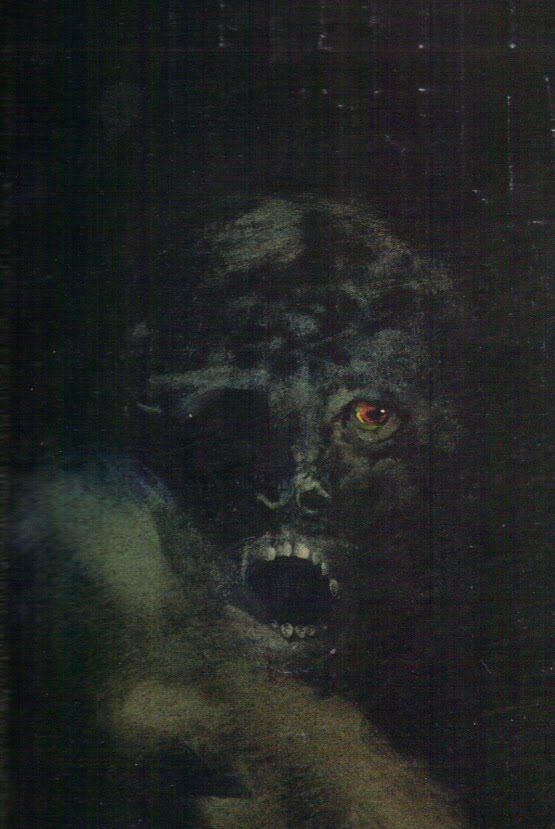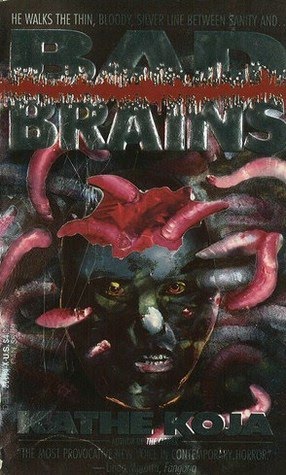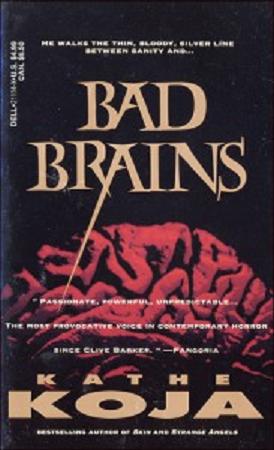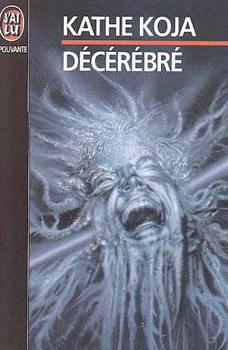Summer of Sleaze is 2014’s turbo-charged trash safari where Will Errickson of Too Much Horror Fiction and Grady Hendrix of The Great Stephen King Reread plunge into the bowels of vintage paperback horror fiction, unearthing treasures and trauma in equal measure.
In January 1991, a new line of horror paperback originals from Dell Books appeared under the imposing imprint of Abyss. Spearheaded by editor Jeanne Cavelos, the Abyss line even included in each book an ambitious mission statement on the very first page.
You’re holding in your hands one of the first in a new line of books of dark fiction, called Abyss. Abyss is horror unlike anything you’ve ever read before. It’s not about haunted houses or evil children or ancient Indian burial grounds. We’ve all read those books, and we all know their plots by heart… Abyss is the new horror from the dark frontier. And in that place, where we come face-to-face with terror, what we find is ourselves…
“Abyss” comes from the famous Nietzsche quote, “If thou gaze long into an abyss, the abyss will also gaze into thee,” which was also featured in each book. Dell/Abyss wanted to present a new breed of horror novel, penetratingly pyschological, one that tried to get at a more real, more human—a more, if you will, illuminating darkness. Very much a reaction against the bestseller comforts of King, Koontz, Saul, Andrews, et. al., Abyss published (mostly) unknown young writers who were literate, underground, cool, and defiantly horror.

The first offering from the Abyss imprint was an uncompromising work of dark fiction, the debut novel from Kathe Koja (b. 1960, Detroit, MI) with the enigmatic title The Cipher. And lo these many years later, I still don’t think there’s been anything in the horror field quite like it. These days Koja writes mostly young-adult fiction, but back in the early 1990s she was, as far as I was concerned at the time, the absolute cutting edge of horror. Her characters were like some young people I knew, my own age, rife with artistic ambitions and personality disorders; their concerns and fears and anxieties were mine.
Koja’s fiction was utterly of the ’90s. A marginalized and disaffected new generation began to shun mainstream culture and was slowly gaining ground as a force to be reckoned with (and a new demographic to take money from, let’s be honest). You might remember: Slacker, Nirvana, Lollapalooza tours, body modification, punk rock cars—the underground had oozed above ground, and wasn’t going away.
Unlike so much horror fiction of the 1980s, we find no endangered families or new mothers or teenage girls or young boys growing up; in The Cipher, Koja’s 20-something characters are poverty-gagged “artists” who exist in that demimonde of shitty jobs, squalid art galleries, and thrift stores; her settings are run-down studios, flat-beer bars, and dingy urban streets choked with black snow. We’re a long way from Castle Rock, Arkham, Stepford, or Oxrun Station, that’s for sure.
The foil-stamped cover image and the stepback art (both by Koja’s husband, the illustrator Rick Lieder) are reminiscent of Francis Bacon, while Koja’s clipped, unpolished, impressionistic prose evokes surrealist, post-modern, avant-garde icons like William S. Burroughs or J.G. Ballard. This set a jittery, jagged tone of bleakness and rot, dank subterranean chills offering little comfort. No cozy read here!
Meet Nicholas and Nakota, an unloving, dysfunctional young couple: he a (very) struggling poet and also (how ’90s) a video-store clerk; she, ostensibly an artist but mostly a bitter instigator. They find, in a disused storage closet of Nicholas’s dilapidated apartment building, a hole in the floor. Simply a hole. Into nothing. And maybe it is nothing.
Black. Not darkness, not the absence of light but living black. Maybe a foot in diameter, maybe a little more. Pure black and the sense of pulsation, especially when you looked at it too closely, the sense of something not living but alive, not even something but some—process. Rabbithole, some strange motherfucking wonderland, you bet…
They dub it “the Funhole” (Koja’s original title for the novel) but it is anything but fun; it is a locus of obsession and transformation. Nakota, conniving, manipulative, angular, and demanding, constantly pressures Nicholas to fuck with the Funhole, to test their limits, to find the Funhole’s reason. First, a jar of insects goes down into it; then a mouse. All come back monstrously deformed and mostly dead. Finally they lower down a camcorder (a funny dated bit is how difficult it is for them to actually get a camcorder) and when they watch the recording they see “something like bloody stalks, caressing the screen like hands behind the glass, a figure carving itself…”

Nakota can’t stop watching their unholy home movie (“You’re watching that like porno,” Nicholas tells her), and then Nicholas accidentally gets his hand in there, and now there’s a weeping seeping cipher in his hand, and his empty, aimless life is going down, down, down… Until the local art-world poseur pals of Nakota’s get wind of something strange going on, and start haranguing Nicholas to show them what he’s doing, what’s he got in there, can we see too? They all find out, and Nicholas wants to show them, because the Funhole is calling him “from its deeps, not music but the elegant drone of bodily organs…”
These disaffected, pretentious, art-damaged and aimless characters are perfect denizens of the ’90s. “Emptiness, yes,” Nicholas muses at one point, “that’s what the Funhole was, wasn’t it, that was the key and clue: a negativity, an absence, a lack. A depression, that’s what a hole was…” I loved this kind of existentialism 101 when I was 20 but now, with a larger literary emotional palette, the novel seems somewhat one-note in places, but that captures Nicholas’s growing obsessive fear as the Funhole overwhelms him.
Often The Cipher is too relentlessly bleak, too scummy, too hopeless; characters bicker and bite, sex is a joyless spasm, Nicholas an alienated, near-unsympathetic loser and Nakota a bitch without the goddess. Still, it’s fascinating, I think, to watch as the circle closes tigher and tighter; we know things will conclude badly for everyone involved. This cipher hungers for lives, no matter how derelict, and Nicholas’s doom is inevitable; that gaze into the abyss comes with immeasurable cost: “What if somehow I’m crawling blind and headfirst into my own sick heart, the void made manifest?”

The Cipher won accolades from Fangoria, Locus, The Magazine of Fantasy & Science Fiction as well as Publishers Weekly and Writer’s Digest. It also scored the Bram Stoker Award for Best First Novel (which it shared with another Abyss title, Melanie Tem’s Prodigal). March 1992 saw the publication of Koja’s second novel from Dell/Abyss. With its obviously punk-inspired title Bad Brains, this novel features another artistic, alienated, not-always unsympathetic protagonist whose world is collapsing into a nightmare of surreality and neurological despair.
For Austen Bandy, depression would be a huge psychological improvement. His wife Emily has left him and then he finds so have his skill and passion for painting huge glistening oil portraits of human-animal hybrids (with names like Criosphinx). Buying beer at an all-night convenience store Austen accidentally falls and cracks his head wide open on the pavement outside, after which he begins having seizures. And seeing things. Or rather, one thing that bleeds into everything, “a dustdevil of fluid, liquid, mucus; silver, almost scalelike, delicate as fish skin and stretching out, elongating…”
For better or worse, Koja drills into Austen’s every hurt and weakness and casts everything in a drizzly, grimy grey light or a harsh winter cold. The atmosphere this creates can be suffocating, even tedious, but damn if it doesn’t fit. Here, human interactions are stilted and ineffective (just wait till Austen visits mom! A real black comedy of bitter resentments); grime and grease tinge every surface; homes and clothes are worn out, threadbare; food and coffee always foul; sex, ugh. Austen’s hopelessness and hard-fought creativity mingle to create a stew of incipient insanity. But is it Austen’s psyche that’s wounded, or is it his very brain?
Who could possibly know? This is no ghost or demon that can be dealt with by the usual professionals. The sanity-shattering silvery snotty serpent thing that now threads and drips and convulses and glides in Austen’s vision, befouling corners, mirrors, faces, beer bottles, then out the nose and ears, is inside Austen’s brain and coming out. And when the brain, where our true self resides, surges silver and pink and rebels against its own best interests, why it will show you just what it’s up to, when you look in the silvered mirror:
I am standing here seeing it, I am seeing it and took of the top off its skull where the brain is and inside, the most delicate writhe, each lobe filigreed, threaded and girdled with silvery death in all its masques and manifestations, in all its irrevocable forms: the elegant pulse of an aneurysm, an extravagant clutch of tumors concealed like an oyster’s pearl, clots like molded caviar and each molecule burning, shining silver light on the bone chips ragged and blood like the swirled center of a dubious treat; and nestled in the rich middle like eggs in a nest, eyes.

Yee-ikes. But transcendence—come disguised as an illness—awaits. After finding no mere medical doctor can cure him, Austen embarks on a long car trip to see his ludicrous mother, then finds a new friend with lunatic father issues, and on till Emily reappears (finding him with his pants down literally), unsmiling, matter-of-fact, certain that Austen can never get past all that “Art 101 bullshit” and accept the responsibilities of his life without her. Then Austen hears from a gallery owner acquaintance back home that he’s sold some of Austen’s old paintings, but that they’re all changing, with one constant: “the relentless drip of a color so pale it was nameless; but if he had to, Peter said, he would call it silver.”
Soon this motley band all find the rumored and reclusive Dr. Quiet, and Dr. Quiet can help, using terms like “the stone of folly” and “duende” and “limbic borders” or some such, getting Austen painting in a frenzy again (I assume his portraits look much like Lieder’s cover art), and revealing through videotapes of monstrosities that Austen might not be alone in his sore world:
…immediate stare into the reddest eyes Austen had ever seen. Jerking too-slow pullback and the whole face came into view, a woman, a girl, the surface of her skin no skin at all but a million mouths: rips, gouges, pulling father back to show that the damge was in no way random, was a pattern: like distorted worms, like the twisting arms of a hungry god.
Or he might be. Everything Koja depicts, everything Austen encounters, could all just be code for the blasted crumbling architecture of Austen’s brain, starved of its art, its love, its vision, its power of creation, that machine of luminosity and magic. One senses a theme in Koja’s fiction: artists are a deranged, depressive, near-suicidal lot whose creative block breeds monsters. The artist on his holy mission creates by leaving terra firma:
to cross the border where the air itself is glass burned black… not only live and die for your art but become it, go past it, eat it bloody and alive and make it over to devour again and again like Cronus eating his children, ignoring their screams because what is is what must be and in all the rooms in the house of art there is only one altar, one half-seen silver priest and one demand.
However I understand not everyone is so enamored of arty characters engaging in what could be seen as self-indulgent self-pity… “Shut up and paint!” you want to yell at Austen at times, but he really does have a physical ailment, so that seems a bit impolitic, no?

Koja, for all her stylistic eccentricities and lack of providing a real plot—we could say Austen himself has no plot—effectively creates dread, suspense, fear and, okay, maybe some bewilderment. But what finally awaits Austen and the people he’s dragged passive-aggressively along with him—haunted me for several days, lingering at the edges of my thoughts like that shimmering silver sheen that tormented him so.
Koja’s prose style in these two books (and continuing in her next two, Skin from 1993 and Strange Angels from 1994) is harsh and clipped, stripped raw, a weird poetry of the crumbling and the crazy. Her writing appealed to my growing appreciation for iconoclastic non-horror authors like Burroughs, Ballard, Bataille, and Céline. She is not for all horror readers, and reviewers of her books on Amazon and Goodreads range from those who give the full five stars to those who wish they could give them zero stars. No matter; unique fiction like this will engender extreme reaction. Her novels are no epic doorstop-sized tomes of horrors human and hellspawned, but works of inner darknesses, works that probe deep into the roiling, bitter psyches of broken people. Koja’s anguished artist characters suffer for their (lack of creating) art, twist and turn helplessly through a worn-out world, exposed in misery, insides spilling out as they search for answers to a madness that seems more, must be more, than simply chemicals misfiring.
The 1990s were marked by people looking for art and entertainment outside the mainstream; fans wanted to be challenged, wanted more than just the latest chart-topper had to offer, wanted to look inward to find new, more difficult truths. Koja’s books fit that bill for many horror fans. Singular and difficult, provocative and uncompromising, The Cipher and Bad Brains have few precedents in the horror genre. There is a powerful originality in these two novels that one usually doesn’t find in paperback horror originals; a fearlessness too as Kathe Koja’s fiction operates, single-mindedly, in that metaphoric realm in which the monster always and only represents ourselves.
Will Errickson covers horror from the ’60s, ’70s, and ’80s on his blog Too Much Horror Fiction.









